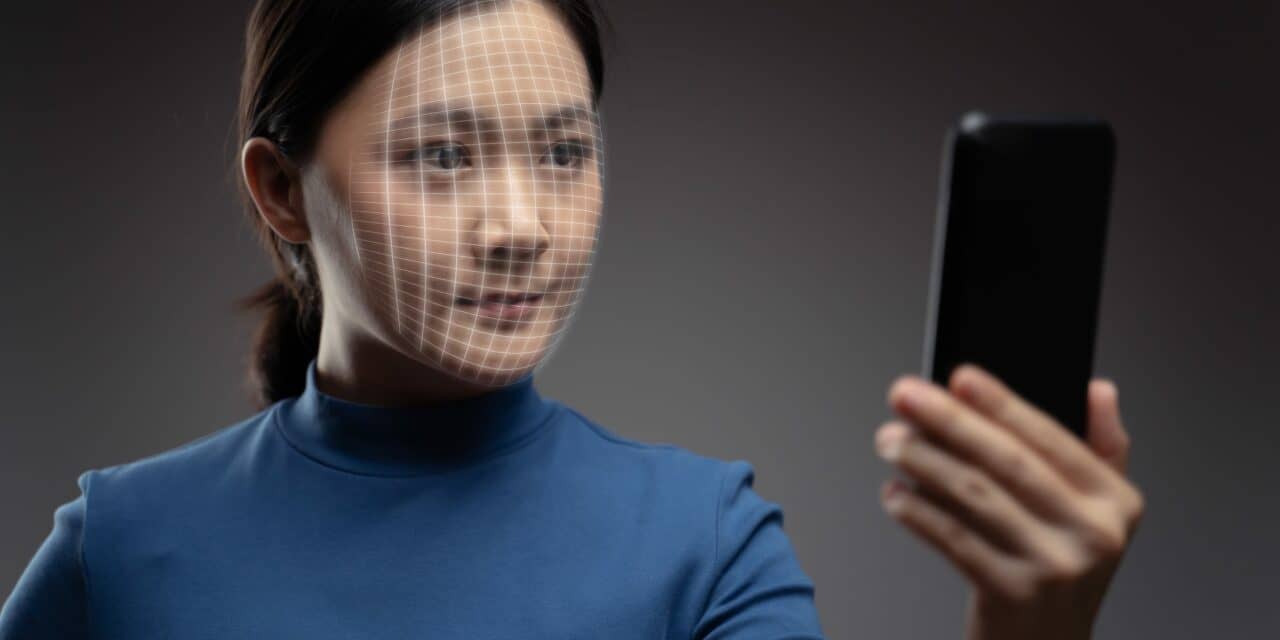Remote CPAP mask fitting technologies help users stay informed of new interface releases and recalls. Streamlined refits and access to the latest masks also elevate the patient experience.
By Alyx Arnett
Remote CPAP mask-fitting technology emerged as a lifeline during the COVID-19 pandemic, allowing patients to be fitted for masks—a process traditionally requiring in-person visits—safely from their homes.
Introduced as a solution to the challenges of providing essential services amid social distancing, the software solutions now show longer-term utility. Beyond facilitating initial fittings, the convenience and accuracy of remote mask fitters are changing the way established CPAP users address fitting issues and discover new mask options, while saving clinician resources.
With several remote mask-fitting programs in play for nearly three years, patients aren’t needing as many refits, according to manufacturers of the technology. That’s due to the software getting the mask right initially—a benefit that equates to patient compliance and a better bottom line, says William Kaigler, co-founder of sovaSage Inc, an artificial intelligence (AI)-powered mask-fitting software company that launched in 2020. Research has shown that patients who fail on their mask the first time are 7.2 times more likely to fail on CPAP therapy.1 “So getting it right the first time is key,” Kaigler says. “If you get that first step wrong, everything else just kind of falls apart.”
According to Kaigler, the manual mask-fitting process yielded about a 22% exchange rate, while sovaSage’s customers typically exchange an average of 5% of their CPAP masks. Michelle Skimas, director of sales and client relations at AR Medical Technologies, maker of remote mask-fitting software MaskFit AR that launched in May 2021, has noticed similar improvements. Clients’ manual refit rates ranged anywhere from 30% to 60%, and today, several accounts are down to 2% refit rates using the software, she says.
Remote Mask-Fitting Technology Streamlines Refits
Even with improved initial mask fittings, patients may still require refits due to factors such as weight changes, evolving health conditions, or mask model discontinuations. The latest tech simplifies the refitting process.
For patients needing refits, durable medical equipment (DME) providers can ask patients to complete new scans remotely. “Let’s say they’ve lost a lot of weight, gained a lot of weight, have facial hair now. They can always resend a new link and do a scan for the patient,” says Skimas.
According to Nyika Wright, vice president of AI-powered remote mask-fitting software maker SleepGlad, “Patients expect that technological intervention in the era in which we live.”
With MaskFit AR, patients complete the process from their smart device via a dedicated app or online portal. They complete a facial scan and answer a few questions. These questions include whether the patient has a deviated septum, seasonal allergies, and if they may have a contraindication to magnets—the latter being a recent addition. Combining face measurements and demographic, clinical, and satisfaction data, the machine-learning algorithms generate up to eight mask recommendations.
Similarly, sovaSage’s TherapistAssist SmartFit gives up to 12 mask recommendations for the patient following a scan, with options for different styles of masks, including full face, nasal pillow, and nasal. Each comes with a “Fit Score,” indicating how strongly the algorithm recommends the mask.
Remote mask-fitting tech companies emphasize that their mask recommendations are rooted in scientific data and statistics, eliminating the possibility of brand or manufacturer biases.
The technology also is helpful during recalls. With MaskFit AR specifically, DMEs can query which patients are using a specific mask, alert them of a recall, and invite the patient to rescan for a new mask.
New AI Features and Self-Evaluation Tools
Remote mask-fitting technology companies continue to enhance their software with new features that further streamline the refitting and reordering process.
Earlier this year, sovaSage launched an AI-powered virtual coach, Jeanie, which can help get the refit process started for patients. Jeanie, now integrated with TherapistAssist, is part of a compliance management service that knows the patient’s prescription, CPAP device, insurance requirements, and more. Patients can raise concerns about their masks from their smartphones 24/7. If a patient is unsatisfied with their mask, Jeanie will call upon the SmartFit mask-fitting tool to suggest the best mask.
Jeanie also can escalate issues to sovaSage’s in-house coaches. “Our coaches can look at their mask fit and listen to the problems the patient is having and recommend an exchange mask without the DME having to schedule a new fitting or do a visit with the patient, whether it be in the office or in the home,” says Kaigler. “And so it’s really efficient process, and it’s very accurate because of that fitting process.”
According to Kaigler, the compliance management service, designed to ensure success beyond the initial mask fitting, has demonstrated a 25% increase in long-term patient compliance.
A new program from AR Medical Technologies, FitChecker, allows current CPAP users to evaluate their current masks by going to the company’s website. They can input their current mask, answer a few questions, and perform a facial scan. The software will show users how their mask ranks for fit, rating as excellent, good, fair, poor, or not recommended.
According to Skimas, FitChecker was created as a response to requests from the medical community who want their patients to have access to the technology while their referral partners have not adopted usage.
If the AI determines the patient’s current mask isn’t the best fit, the patient can present the recommendations to their provider to obtain a better-fitting one.
Optimizing Efficiency and Boosting Mask Reorders
For providers, remote mask-fitting technology reduces labor costs by eliminating the need to manually present mask options to patients and frees up clinicians’ schedules. This allows more time to attend to patients who require additional care, says Wright. She adds that, for providers who had been offering tech-less remote fittings, the software cuts down on the reliance on expensive CPAP mask starter packs—that often come with several cushion sizes for patients to try—and decreases patient confusion.
Patients are also more likely to place resupply orders since they are using the better-fitting masks more, says Kaigler. Some remote mask-fitting programs include resupply integration. Skimas further points out that the streamlined process makes patients more inclined to reorder CPAP masks, which insurance permits every so many months.
Some programs include automatic notifications to remind patients when they’re eligible for a new mask. Jeanie, the virtual coach, prompts patients upon qualification and guides them through the process, whether that’s reordering their current mask or exploring newer or more suitable models without having to revisit their physician’s office or sleep lab for a fitting.
Remote mask-fitting software companies maintain current information on new mask launches, enabling patients to be paired with the latest masks without providers needing to track new releases themselves. CPAP mask manufacturers will “reach out and say, ‘We’re going to launch this new mask. Can you make sure it’s in your system before we announce it?” says Kaigler. Wright says SleepGlad also liaises with mask manufacturers to stay informed about mask releases and discontinuations.
MaskFit AR currently features 114 masks in its US system. While DMEs can create their own custom formularies based on mask choices, MaskFit AR also furnishes data on which masks are frequently recommended, regardless of whether it’s in the DME’s formulary. Skimas believes these insights will enhance mask selection over time. “They can see these are the true recommended masks based on all of the information our AI uses,” Skimas says. “Data is powerful, and that’s an excellent way to help the patient and help the DME at the same time.”
Although the COVID-19 pandemic posed challenges to traditional healthcare delivery, it propelled companies to release their remote mask-fitting software—some of which had been in development for years—and their adoption continues. “Frankly, if the pandemic hadn’t happened, this would not have progressed this quickly,” says Kaigler. “And part of what happened was that the market was forced to look at doing things differently and quickly realized that patients were more open to things like this than they thought.”
Skimas is hopeful data from the software could be used in the future to inform even better mask designs. “It would be wonderful just to see that we’re able to even create better masks down the line,” she says.
Reference
- Bachour A, Vitikainen P, Maasilta P. Rates of initial acceptance of PAP masks and outcomes of mask switching. Sleep Breath. 2016;20(2):733-738.









